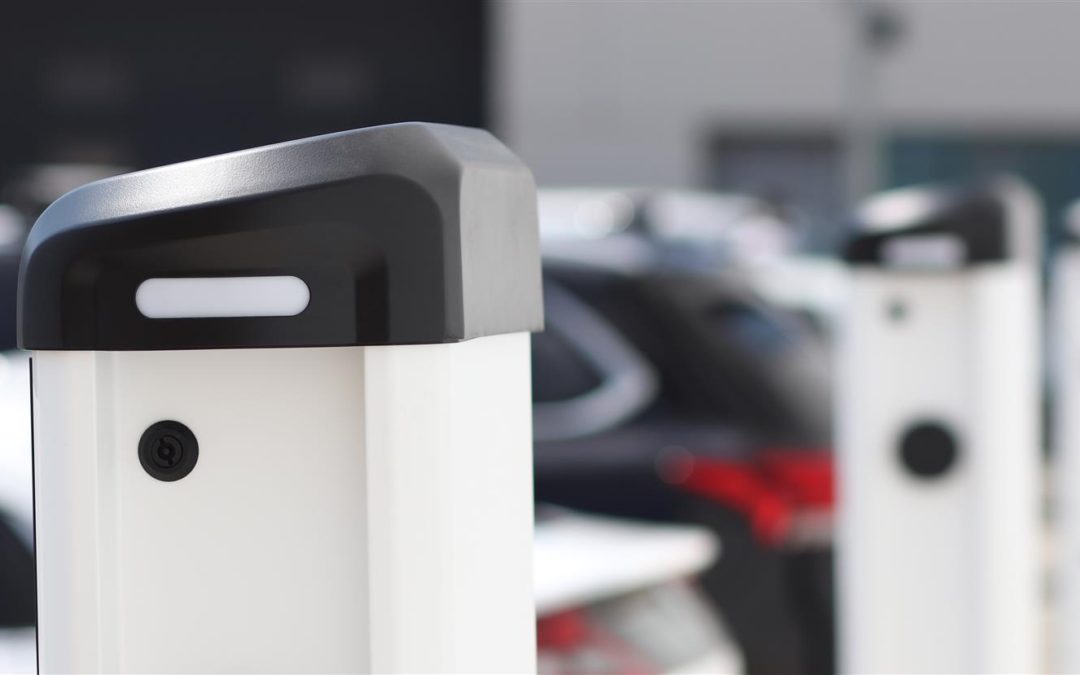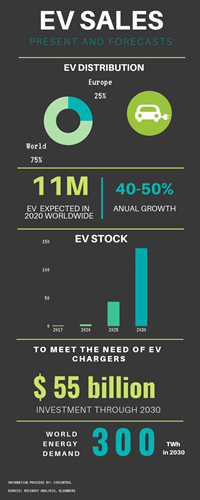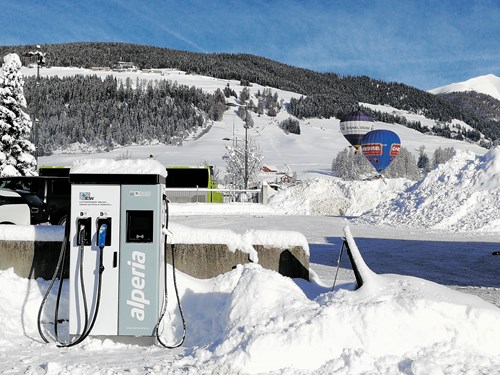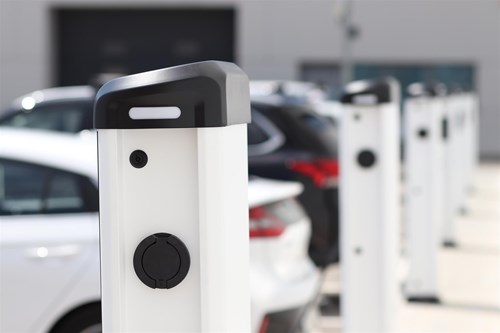
Installation of EV charging stations and energy managment to meet power demands without overloading the grid among the main challenges
Yes, this time electric vehicle (EV) is here to stay and data proves it. A total of 2,1 million of EV have been manufactured worldwide in 2018 and sales of this kind of vehicles will grow a 64% compared to 2017. These figures may seem an important advance, but they are nothing compared to the prediction of market opinion leaders. The real growth is yet to come.
The expected change in energetic and automotive sector is a big challenge for humanity. This change is even bigger than the one that occurred when gasoline cars replaced the horse-drawn carriage.
We are facing an enormous change that causes many questions to arise such as:
- When will EV have a massive presence in streets and roads?
- Are automotive, electric, oil and governmental sectors ready to face EV market demand?
- How many EV chargers do we need? What kind of chargers? Where will they be located?
- What technological challenges will we have to face to adapt EV charging to new business models satisfying driver’s expectations?
There are four main markets for Electric Vehicles: China, the largest and the one experiencing the most important growth, United States, India and Europe. In this article we are going to focus on European market.
Current situation and growth forecasts
During 2017 1,2 million units of EV were sold worldwide, and 306,000 in Europe. Leader countries in Europe are Norway (20% market share), followed by Germany (18%) and United Kingdom (15%). Spain, with only a 2% of EV, is still far away from these countries.
This growth will be more important each day, in 2018 this growth is expected to reach a 64% and 2,1 million of vehicles and over the years it will increase even more. Bloomberg News Energy Finance foresees that 4 million of EVs will be manufactured in 2020, a figure that represents a 4,2% of all manufactured vehicles. They also predict that there will be 9-10 million EVs worldwide and that this kind of vehicles will continue their growth reaching 60 million in 2040, which will correspond to 55% of light vehicles and a 33% of world fleet.
This brings us to some conclusions related to the situation expected in the market for 2040:
- Long term EV sales will depend on the spreading speed of charging infrastructure in key markets.
- China is, and will continue to be, the most important EV market in the world.
- Bus electrification will be faster than light vehicle electrification.
- EV will replace about 7,3 million of oil barrel’s per day.
- The new electric mobility scenario will cause a great impact in automotive industry, environmental conditions and the electric power sector.
A new business model: equipments and services for EV charging
The massive deployment of EV charging stations is a key issue for its implementation. To achieve this, it is necessary to invest in EV manufacturer and service provider industry. Companies, big or small, have lots of opportunities, but an important investment is required. It is estimated that the investment to face EV charger needs will reach 55 billion dollars in 2030 and the China, with 19 billion, will be the country leading this investment followed closely by Europe (17 billion).
According to EAFO (Europe Alternative Fuels Observatory) there are important differences in the number of public EV chargers in European countries, but there is one constant: most of them are slow chargers (AC). Germany is the leading country with 25.755 AC chargers and 828 DC chargers, followed by France with 16.554 AC and 777 DC and Great Britain with 15.347 DC chargers and 935 AC chargers. Spain is still far away of this first positions with 5.191 AC chargers and 188 DC chargers.
We will charge EVs in many different places, but homes and workplaces will be the more convenient charging locations for drivers and for the grid. On one hand, the driver saves time because the vehicle charges while is parked at the locations where he spends more hours per day. On the other hand, the slow demand of thousand of charging points benefits the grid allowing a regulation to charge during night hours and when there is a low demand. In addition, in a near future EV batteries will be able to return energy to the grid when it is convenient for both parts.
If we divide the load having in mind the location where the charger is installed, we can find four sectors. The main ones are domestic and destination, which include workplaces, fleets, car sharing, carparks and shopping malls. Vehicles will also be able to charge on route, with chargers on public roads, service stations and EV charging stations. And do not forget the electric bus sector.


Another turning point will be the cost of EV charging service that is currently uneven, depending on the country and the charging operator. In some countries or areas, the load is free, since it is subsidized by the government or by local authorities. This is common in countries where e-mobility is in its early stages and governmental organizations want to ease its adoption.
In other situations or locations, however, the driver pays for the load but the cost can change a lot. It is difficult to monitor prices for each country because there is still a big dispersion.
One of the biggest challenges for the increase of the charging stations is the amount of energy required to make them work. In 2018 the electrical energy consumed to charge 4 million EVs will be around 10 Twh (average per car 12.500 km/year – consumption 20kW/100km). It is a very low figure compared to the total amount of electricity consumed which is 25.000 TWh worldwide, 4.000 TWh in the European Union and 265 TWh in Spain. The demand of electricity to charge electric vehicles will increase in the next years and will get to 300 TWh in 2030 that will be necessary to charge 140 million EVs in the conditions of use and consumption mentioned above.
The predictions of the most credible consultants and companies of the sector the alternating current (AC) will be the most important way of fulfilling EV batteries. However, faster direct current (DC) is required for vehicles that can not charge at home or at work, for example. Ultraquick charge (also DC) will be needed for vehicles on route (highways), electric bus (eBUS) charging and heavy electric vehicles (eTRUCK).
We need to realize that a local grid in low tension will not always support quick or ultraquick charge and sometimes AC or DC charge will be more appropriate.
The power needed to charge 1 million cars simultaneously with an average power of 10kW is 10 GW. Some will charge at home at 3,2-7,4 kW, some at work at 7,4-11 kW, other at public chargers at 22-50 kW, in addition to those who will charge at ultraquick chargers at 50-150-300 kW. Consequently, to charge one million EVs, around 20 GWh are required (considering an average load of 20 kWh per session).
Therefore, charging one million of EVs is only possible with a global energy management of the country or an adequate macrozone (daily power curve and local energy limitations in the distribution of low voltage energy should be considered).
With all these considerations we see that the coming years will be a great opportunity for electric vehicle that every day is closer to become a predominant vehicle in our cities and roads. But this boom also represents a challenge to install charging stations and offer energy management systems that allow them to work without overloading the grid. For all this we began an exciting time for e-mobility, a business sector that will revolutionize the automotive and energy sector.
About Circontrol 
Circontrol is a company founded in 1997 with headquarters in Viladecavalls (Barcelona). Its parking division designs and manufacture a global solution for efficient parking (guidance system, LED Lighting, energetic efficiency). Its e-mobility division manufactures a wide range of EV charging solutions that covers all market needs: domestic charge, slow charge (AC) and quick charge (DC).
Circontrol has a strong presence in the international market, where an 80% of its sales are allocated. Nowadays you can find Circontrol solutions in 52 countries with 30.000 charging points and 400.000 parking spaces managed with CirPark systems. Service is also very important for Circontrol, this is the reason why bet on a qualified aftersales service and a constant training for Circontrol partners are in company’s DNA.





